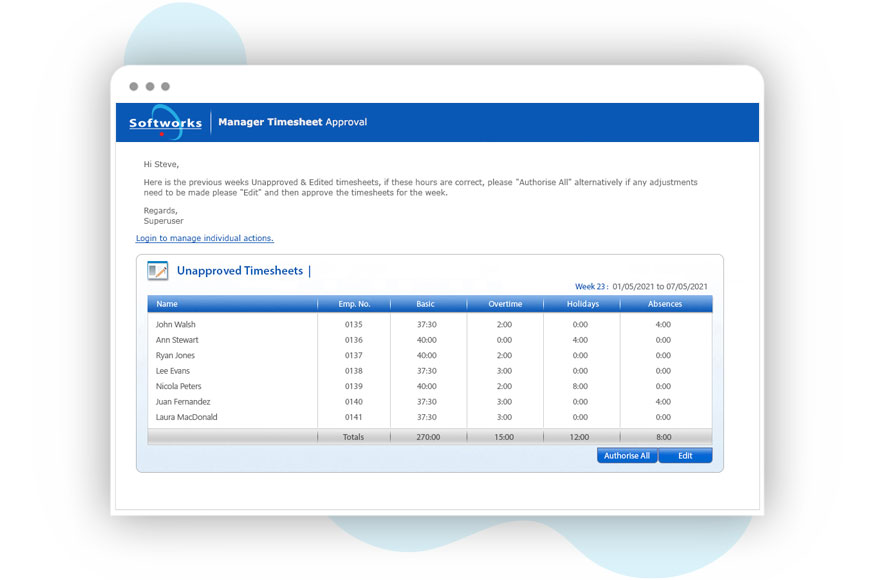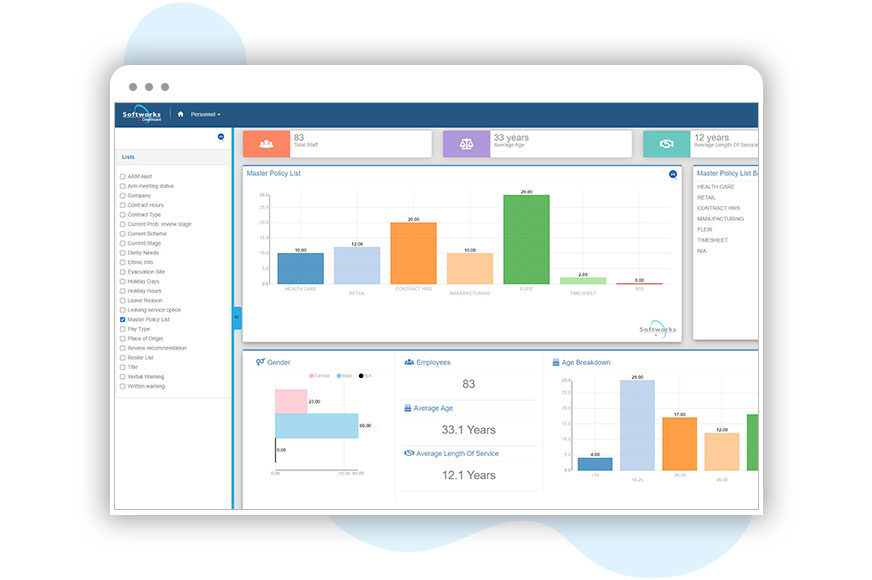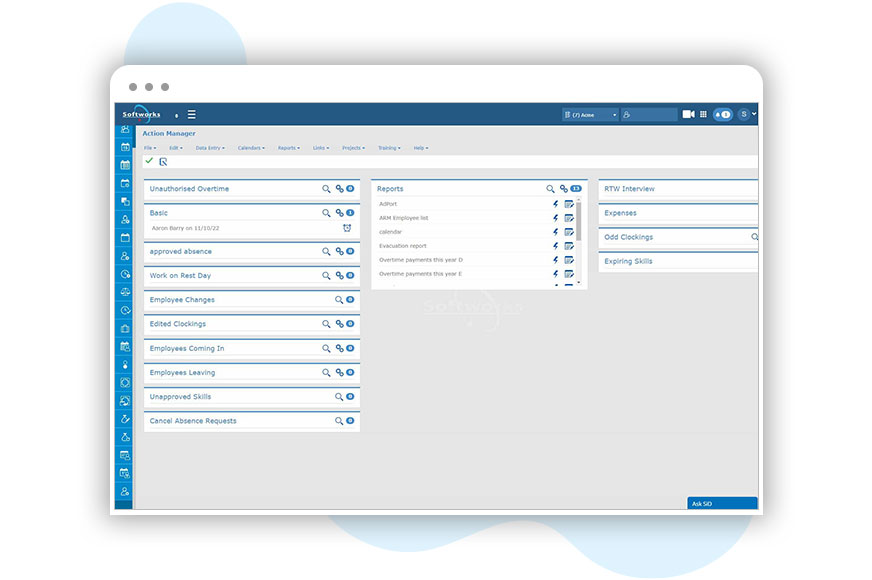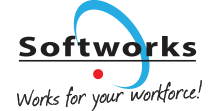Alerts and Workflow module automatically notifies managers of employee management tasks that need attention, saves time and helps improve decision-making.

- · Push Messages and Alerts to Managers
- · Deliver/Receive Event-triggered Alerts or Timed Tasks
- · Set up Rules for Triggered and Timed Alerts
- · Automate Tasks
Unlock the full power of Softworks Workforce Management Software by creating custom Alerts and Workflows that automate and streamline employee management tasks.
Push messages and alerts to your managers and supervisors rather than waiting for them to react or remember to check absent or late employees etc. Set reminders of approaching deadlines, notify of infringements of your Time and Attendance policy or benchmark the performance of one department against another.
Benefits of Alerts and Workflow
Triggered Alerts vs. Timed Tasks
Triggered Alerts
A triggered alert enables an action to be taken when a particular event has occurred. Depending on your policies, you determine the actions because you know what information you want immediate access to. For example, you may want to schedule an alert if there is a sudden increase in sickness absence, overtime or a violation to working time legislation.


Timed Tasks
A timed task is a task that is configured to run at certain intervals e.g. daily, weekly, monthly etc. Timed tasks could be used to automatically generate reports areas such as punctuality checks, monthly absence figures or weekly overtime reports.
Key Capabilities
Integration
Can be integrated with other Softworks products to prompt managers to check for doctor’s notes, carry out return-to-work interviews or send reminders to do so.
Enhancement
Enhances the Softworks range as a proactive Time & Attendance solution.
Security
Offers security – security selection and profile for users will be respected within the generation of tasks.
Frequently Asked Questions
What are triggered alerts?
Triggered alerts are notifications or actions that are automatically initiated when a specific event occurs.
In Softworks Alerts and Workflow solution, triggered alerts can be set up based on your organization’s policies and requirements. For example, you can schedule alerts to notify you when sickness absence levels increase, overtime exceeds a certain threshold, violations of working time regulations occur, or holiday balances expire.
Can you schedule specific tasks?
Yes, with Softworks Alerts and Workflow solution, you can schedule specific tasks using timed tasks functionality.
Timed tasks can be configured to run at certain intervals, such as daily, weekly, or monthly, enabling you to automate the generation of reports or perform checks at regular intervals.
Can a manager be notified in case an employee is absent?
Yes, Softworks Alerts and Workflow solution allows managers to be notified in case of employee absences.
Triggered alerts can be configured to send automatic notifications to managers when an absence event occurs, ensuring they are promptly informed about employee absences and can take appropriate actions, such as finding a replacement staff member.
What are triggered alerts used for the most?
Triggered alerts are commonly used for various purposes, depending on the organization’s needs. Some of the most common uses for triggered alerts include:
– Monitoring and managing employee absence levels
– Tracking and controlling overtime costs
– Ensuring compliance with working time regulations
– Highlighting expiring holiday balances
– Notifying managers of specific events or violations
– Triggered alerts provide proactive notifications, allowing organizations to stay on top of critical information and take timely actions to address any issues or concerns.
What We Do – The Softworks Story…
From Time and Attendance Tracking to a complete Workforce Management Solution…

















